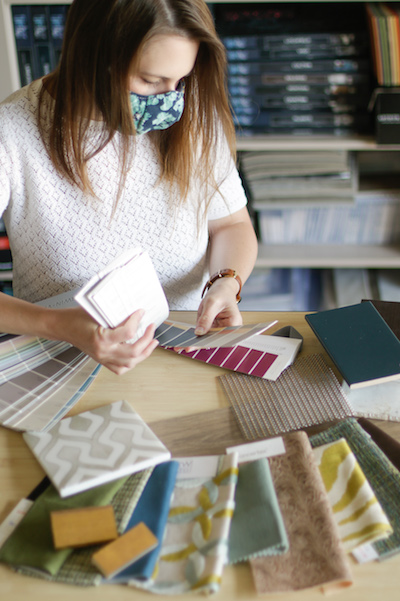Office Life: Post Covid-19
June 23, 2020
By Alyssa Lopez, Design Intern, Marywood University
When the topic of returning to the office arises, one question comes to everyone’s minds: What is going to change? With public health in mind, there is no doubt that both the office dynamic and the manner in which employees collaborate will be different moving forward. The working dynamic during the coronavirus has drastically changed and will continue to change upon our return to the workplace. Where productivity once took priority, workplaces will see a new emphasis on maintaining a healthy and safe work environment. As a result of these new methods of thinking, at DesignPoint we believe these transitions will only further support the goals we aim to meet on a daily basis; as designers who care about the condition of the environments in which we inhabit.
Workspace Materiality
One thing that is bound to be more prevalent in offices is easy to clean surfaces. Porous surfaces such as wood and natural stone, are going to be seen less and less and be replaced with non-porous surfaces such as glass, processed metal, and plastics that are less likely to hold bacteria. These materials, i.e. solid surface products are already heavily used in healthcare design for their anti-microbial properties and cleanability. We will likely see the same design theory transfer over to corporate settings. These materials will assist in keeping the office virus and bacteria-free.
For this reason, I anticipate they will start to be used anywhere possible, especially in high traffic public areas. While we always strive to create environments that are both sustainable and long-lasting, further defining the need for safe materials can help to pave a path for future design industry standards.
Rotating Employees
With the implementation of social distancing around the globe, it could be very challenging to return to an office layout where employees are seated less than 6 feet apart. Large corporate offices looking to reserve floor area often use “hoteling stations” or “benching systems” which result in employees sitting closer to each other. To avoid feeling overcrowded in the office, an employee rotation could be helpful. Creating two sets of employees and alternating the days that they are in the office will allow for more space and reduce the risk of spreading illness or infection. During a time of uneasiness and lack of usual socialization, this gentle transition to avoid capacity overload could help to maximize further safety measures as more openings occur.
Voluntary Online Meetings
Employees all over the world have been adjusting to working online and communicating through various networking and telecommunicating platforms. It is very likely that when returning to the office people will choose to continue meeting over video calls enabling clients to stay within their comfort zone and while moving ahead with job responsibilities. It is possible that employees and employers will choose to work almost completely remote versus returning to the office. As we pay close attention to the advantages that the online world continues to provide us, I find it important to utilize the growing benefits of online learning and conversation tools that are able to elevate our professional work and the ability to share it with others.
Contactless workspace
Technology can prove to be a useful advantage during a global crisis. Not only does it provide communication without physical contact but it allows simple tasks to also be performed contactless. Preventative actions to reduce contact can include the use of cellphone apps to turn on the lights or send something to print without employees having to touch the same objects. Keeping these shared surfaces to a minimum reduces the spread of germs around the office, and ultimately makes for a safe environment that we can trust.
More Sanitary stations
Possibly the simplest solution to maintaining public health is the addition of sanitizing stations equipped with hand sanitizer or disinfecting wipes around the office. This simple addition equips employees with the supplies needed to maintain hygiene and sanitation.
Beyond these few examples, there are many more options to improve the office dynamic in the wake of a global pandemic. Though it is doubtful that the workspace will ever return to the former status quo, that is not to say that it hasn’t changed for the better. We are now more aware of sanitation practices and equipped with technology to make the new workplace both productive and healthy. With these considerations in mind, we look forward to a transition back into office life that makes our coworkers and partners feel safe by all means necessary. Allowing safety and health to take the front seat in the future of our practice we realize can only benefit us beyond our normal duties as designers.